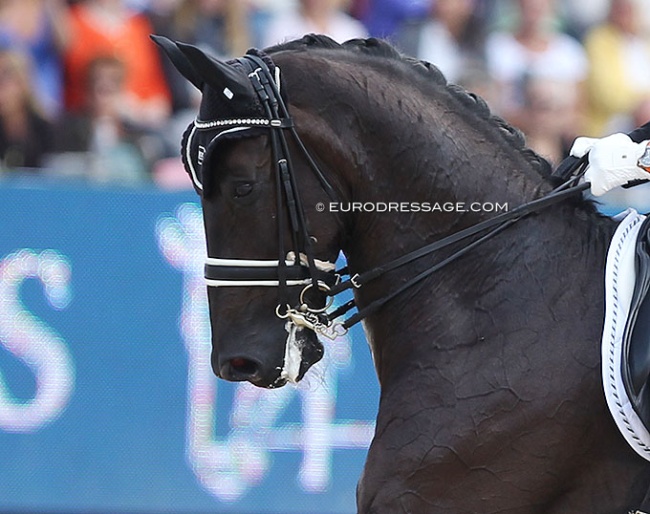
- Text by Sarah Warne-Furtado for Eurodressage
At a clinic in Australia year ago Nuno Oliveira asked a rider if she knew where Africa was. The rider answered yes she did. Nuno then jokingly told her to go to the airport and head to Africa if you want to ride a camel.
He was referring to the fact that the horse had his head stuck in the air.
“Normally speaking, a horse should be trained to remain well balanced first, concentrating on rounding his paces, and augmenting his hind legs’ action to compliment the forelegs’ paces," Oliveira stated. "Any extension should not be achieved through the reins’ force, but rather by lowering and empowering the haunches. This is what the French called the "Ramener" - putting the horse gently ‘on the bit’ to correspond with the degree and length of pace."
So what is “on the bit?”
The dressage world seems to be in a battle between two extremes. The brutal extreme on one side, where the horse is pulled by force into a position typically far “behind the bit”, and the other extreme where riders ride around with no contact and above the bit to enable the horse to be “in front of the vertical”.
However, horses in front of the vertical should also be straight, round, in rhythm, with engagement and impulsion. If the horse is only in front of the vertical he can also be hollow in the back, disengaged, without rhythm, which is also not good for the horse and his health.
“To relax that rein is not drop the contact," Nuno Oliveira opined.
Somewhere, sitting happily in the middle, are the enthusiasts, riders, trainers, and fans, dedicated to seeing a horse who is “on the bit”. It sounds simple, but a truly correct connection, comes from the back of the horse to the front of the horse, and is the demonstration of true equestrian art.
So how did he get there? “On the bit?” This is the most important question. A horse that is truly on the bit, in lightness, with engagement and self carriage, who is lifting his back up and reaching his neck forward into the contact, gets there through correct training. It comes from gymnastic exercises, and a rider posture that prioritises efficient subtle aids and an elastic rein. It is teaching the horse to use himself from the back to the front so that all the elastic energy and impulsion from the hind quarters of the horse, travels over the back, and into a rein that channels and filters that energy.
There is much literature and many masters who train and teach riders how to achieve self carriage, balance and connection. We strive daily to fulfil all the necessary requirements for the horse to find his balance and elastic connection to the rider’s hand. Yet, the extremes are still present, growing even.
The “behind the bit," closed in the gullet, strong pulling hands, and driving legs version is easy to understand. To achieve collection through force, is to overuse the legs and hands, often contradictorily, until the horse retreats and contracts to cope with the constant pressure. We then see ‘fling ding’ manufactured trots and robotic like movement, with backwards halts and ‘trot on the spot’ piaffe.
“Mistakes of the legs show up in the mouth," is one of Nuno's quotes.
On the other hand, a rider with little understanding or correct guidance, might find relief in a method that forgets all about rhythm, balance, connection, bend, and simply allows the horse to go around in sideways lines, with a hollow back and the reins in loops.I have pages of notes from my mum’s clinics with Nuno Oliveira, and repeatedly he asked students to “look the rhythm” (focus on the rhythm) and “the horse must be round” (meaning not with its head above the bit and in the air.)
Somehow though, these “methods” show up, in all different shapes and sizes, simply because ... It requires a lot more patience, humility, time and knowledge to train a horse correctly!
“Putting the horse on the bit means feeling that the poll flexes, the back rises, the haunches become more active," Oliveira stated.
This comes of course through straightness, and bending, and rider tact; creating energy and impulsion and filtering gently with the rein.
In the pursuit of something artistic, something of worth, something that unites horse and human in a delicate connection, this cannot be achieved quickly. Simply put, if it sounds too good to be true, it probably is!